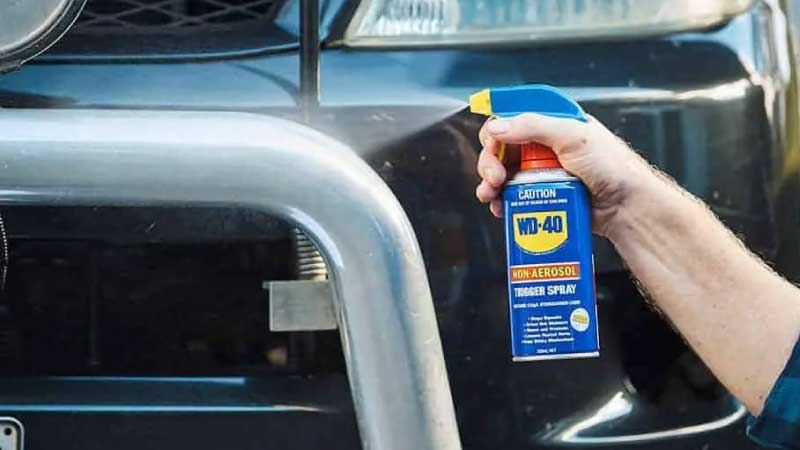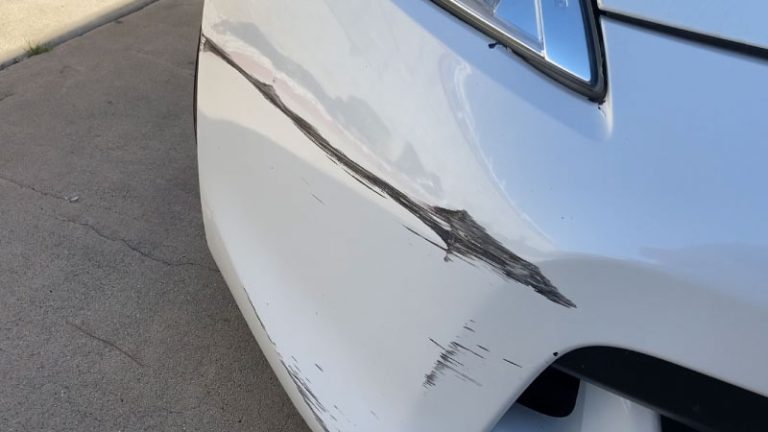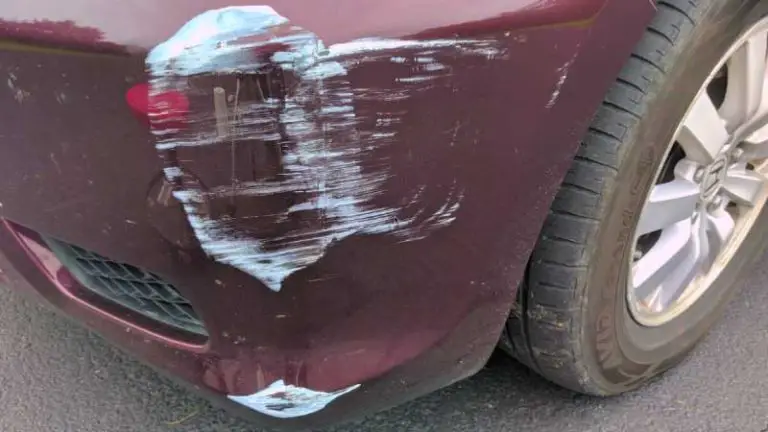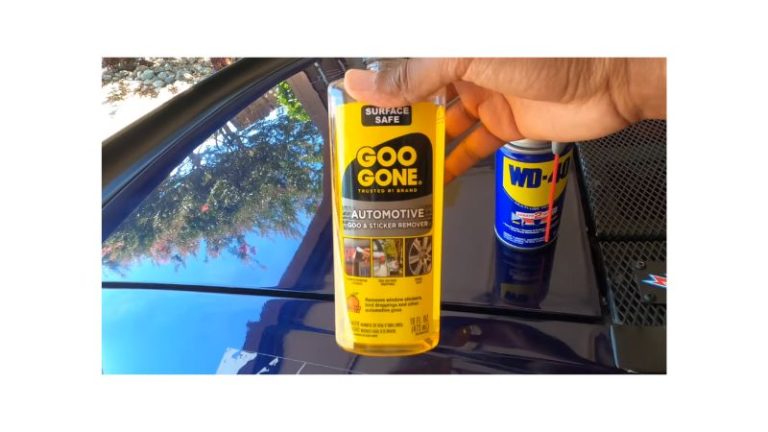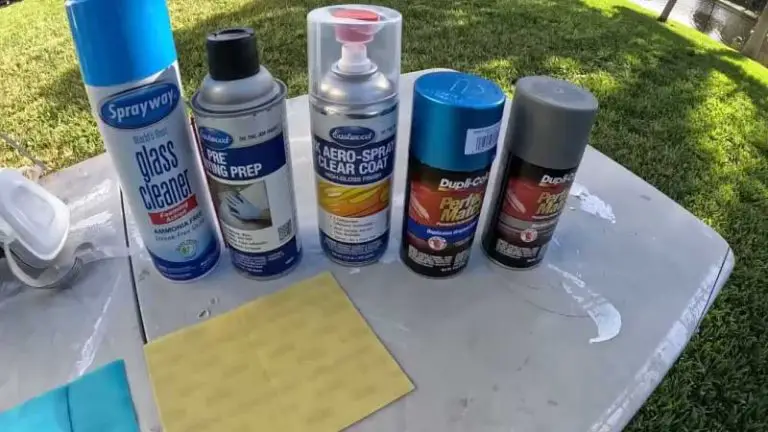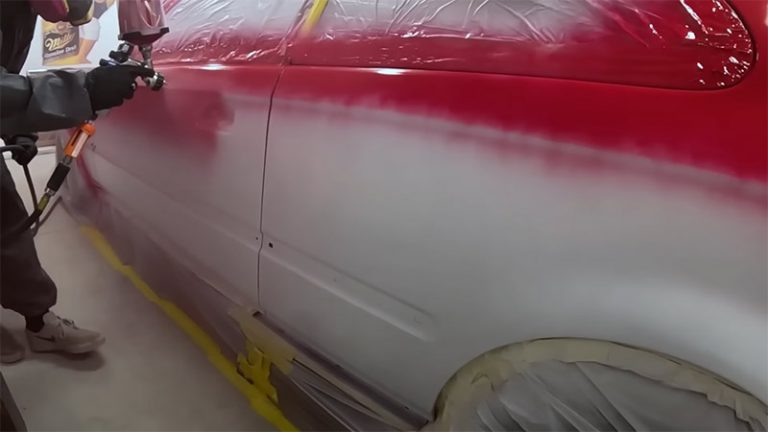Will Wd40 Damage Car Paint: Know The Truth
When it comes to removing tough stains or adhesive residue from your car’s paint, adding some WD-40 to the mixture can be an efficient method. Wd-40 will not cause damage to car paint if it is applied in the correct manner; however, it should be used with extreme caution to avoid any potential risks.
It is essential to follow proper application techniques to prevent any harm to the paint. Wd-40 should be applied sparingly using a soft cloth, and excessive scrubbing should be avoided. It is also recommended to test a small, inconspicuous area before applying it to the entire surface.
By taking these precautions, you can safely use WD-40 to clean your car without worrying about any potential damage to the paint.
How Does Wd40 Affect Car Paint?
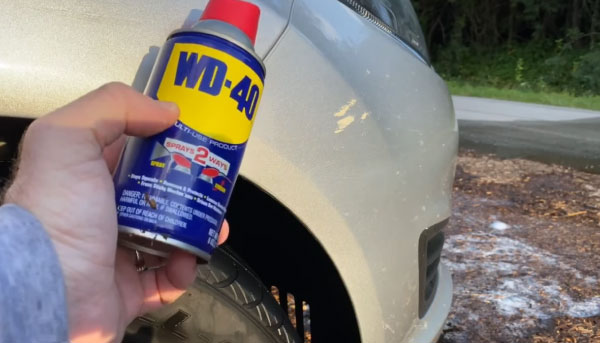
Wd40, a popular multi-purpose lubricant, may have an impact on car paint due to its chemical composition. There is concern among car owners regarding the ingredients present in WD40 that could potentially harm the paint. It is important to understand the potential reactions between WD40 and car paint to assess any damage.
When applying WD40 to painted surfaces, it is best to proceed with extreme caution because there is no conclusive evidence to support either side of the debate. If you have worries about how WD-40 might react with your car paint, it’s best to check the label to see which chemicals it contains.
Ultimately, conducting a small test on an inconspicuous area before applying WD40 to the entire car surface is a wise approach. Being careful and vigilant can help mitigate any potential damage to car paint.
Effect Of Wd40 On Car Paint: Factors That Influence
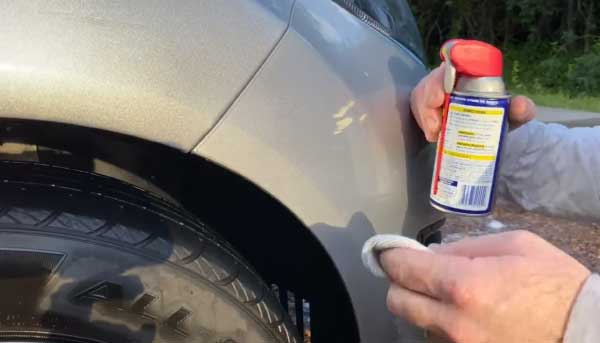
Considerations such as the car’s paint quality and condition, the duration of time the vehicle was exposed to WD40, and the surrounding temperature and humidity are all important in estimating the risk of damage. How the paint on the car responds to WD40 is heavily influenced by both the quality and condition of the paint.
The longer the car is exposed to the product, the higher the chances of damage. Additionally, extreme temperatures and harsh environmental conditions can worsen the impact. It is important to take all these factors into account and exercise caution when using WD40 on car paint to avoid any potential harm.
Read Also: Will Vinegar Truly Ruin Your Car?
How to Use WD40 on Car Paint: Best Practices For Using

Using WD40 on cars requires proper application techniques to minimize potential damage to the paint. One precaution to take is to ensure that the WD40 is only applied to the intended area and not sprayed directly onto the car’s paint.
It’s also important to avoid allowing the WD40 to sit on the paint for extended periods of time, as this can cause damage. Additionally, it’s recommended to test a small, inconspicuous area first to determine any adverse effects on the paint.
If you’re concerned about using WD40 on your car, there are alternatives available for specific car maintenance tasks. For example, to remove stickers or adhesive residue, rubbing alcohol or a specialized adhesive remover can be used instead. By following these best practices and taking the necessary precautions, you can safely use WD40 on your car without damaging the paint.
Common Misconceptions About Wd40 And Car Paint
There is a common misconception that WD40 can damage car paint, but this is actually a myth. Contrary to popular belief, WD40 does not harm car paint in any way. Many people worry that using WD40 on their car can cause the paint to peel or fade, but this is simply not true.
Wd40 is a versatile lubricant that is safe to use on a variety of surfaces, including car paint. In fact, WD40 can even help remove stubborn stains or tar from your vehicle’s exterior. So, if you were hesitant to use WD40 on your car for fear of damaging the paint, rest assured that it is completely safe to do so.
Don’t let this common misconception keep you from enjoying the benefits of WD40 on your car’s exterior.
Read More: How to Remove Gum from Car Paint?
Tips For Safeguarding Car Paint From Wd40

Regular maintenance routines are crucial for keeping your car’s paint in optimal condition. When it comes to safeguarding your car paint from WD40, it’s essential to implement protective measures to prevent accidental contact. By following a few simple steps, you can avoid potential damage.
Firstly, take care to keep the can of WD40 away from your car to minimize the risk of any accidental sprays or spills. Additionally, consider using protective covers or plastic sheets to shield your car’s paint during any nearby WD40 applications.
In the event that WD40 does come into contact with your car’s paint, it’s important to address it promptly. There are various cleaning and restoration techniques available to safely remove WD40 residue from your car’s paint. By being proactive and taking preventative measures, you can keep your car’s paint looking its best.
FAQs: Will Wd40 Damage Car Paint
Can WD-40 Remove Car Paint Scratches?
Wd-40 can help temporarily hide shallow scratches on car paint by filling them in and making them less noticeable.
Will WD-40 Damage Car Paint?
Wd-40 is safe to use on car paint as it is designed to protect metal surfaces without harming paint.
Is It Safe To Use Wd-40 On Clear Coat?
It is safe to use WD-40 on clear coat as it creates a protective barrier that helps prevent damage to the paint.
Conclusion
Using WD-40 on car paint can have mixed results. While WD-40 can effectively remove stains, glue residue, and other surface contaminants, it may also leave behind a greasy residue that could damage the paint.
It is essential to test WD-40 on a small, inconspicuous area before applying it to a larger surface.
Furthermore, taking precautions such as applying a protective wax or polish after using WD-40 can help mitigate any potential damage. Alternatively, using dedicated automotive cleaning products specifically designed for car paint is a safer option to ensure the longevity and appearance of your vehicle’s paintwork.
Regularly washing, waxing, and maintaining your car’s paint will also help protect it against potential damage and keep it looking its best. When it comes to car paint, prevention is key, so choose your cleaning products wisely to maintain the beauty and value of your vehicle.

